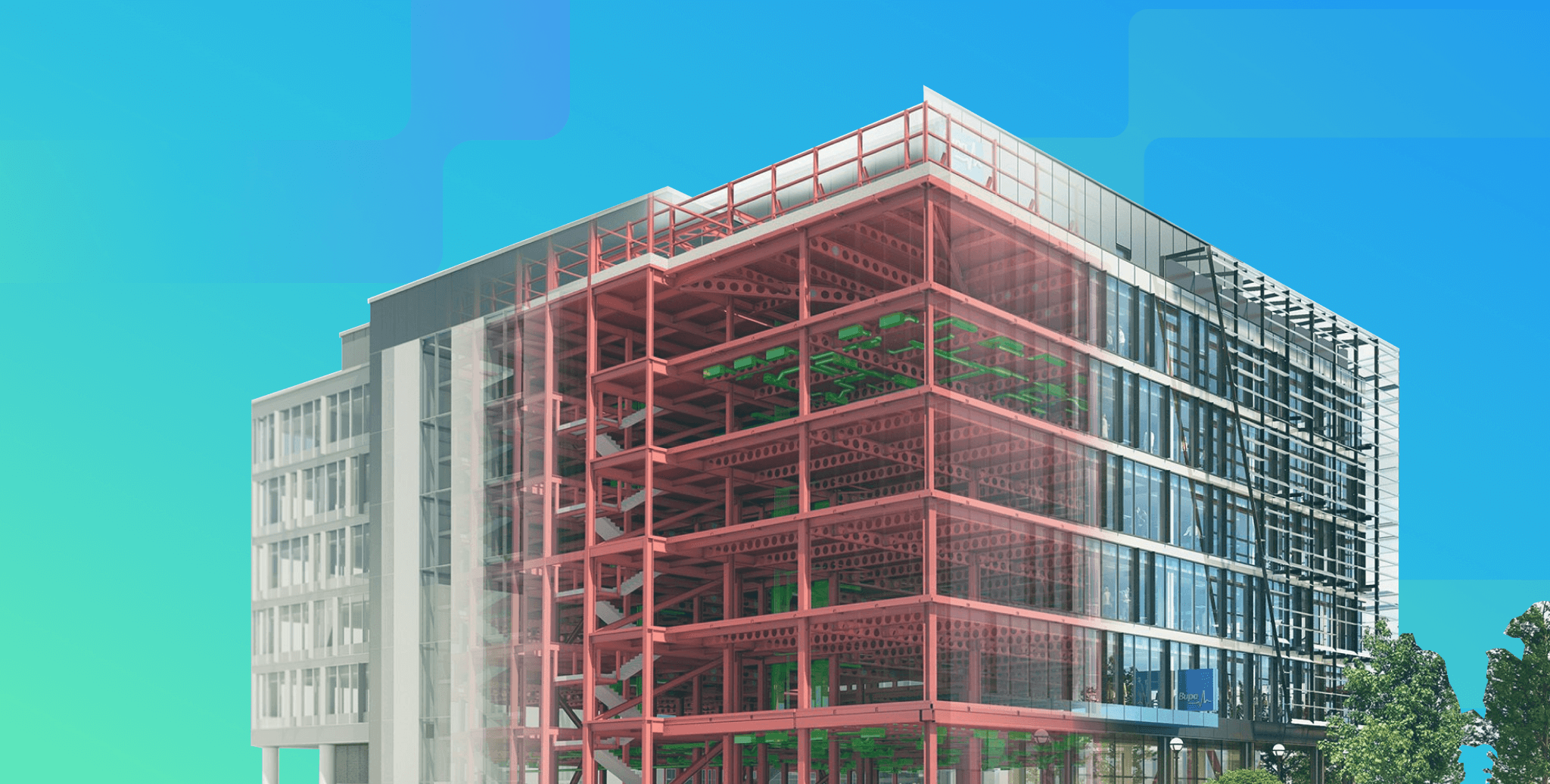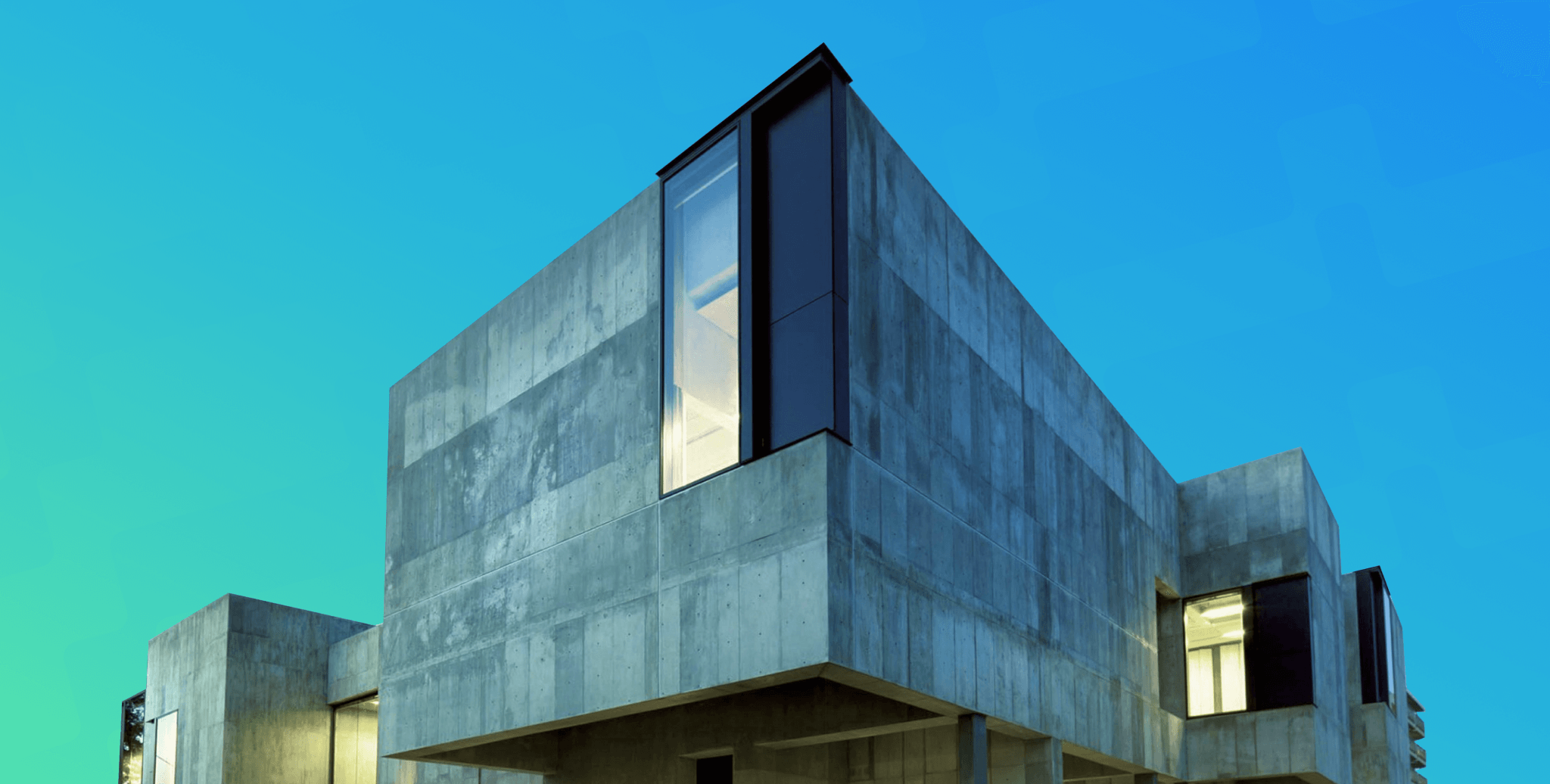The Most Exciting Upcoming Mega Projects in Dubai & UAE (2025)
Table of Contents
“Make it happen”- says the national slogan of the United Arab Emirates.
The statement reflects the federal monarchy’s resilience, strength, and the urge to be extraordinary. Today, the UAE is considered synonymous with progress, future-forwardness, and innovation across the globe. The nation’s development in the past two decades is an absolute tstament to its visionary leadership. Their action-driven approach alongside the rapid adoption of technology has been the key contributor to the rise of the UAE as a formidable name on the global map.
Building Construction and Infrastructure Development in the UAE
Oxagon, a part of the NEOM project
UAE’s commitment to diversifying its economy and establishing the country as a global business and tourism hub has driven the initiation of large-scale infrastructure projects like the NEOM Project. The UAE's strategic and resourceful geographic location has positioned it as a gateway between East and West, facilitating international trade and commerce. This advantageous position has attracted global attention, leading to increased infrastructural investments to support the burgeoning economic activities. Additionally, the UAE's stable political landscape and proactive regulatory frameworks have instilled confidence in investors, attracting substantial financial backing. The continuous pursuit of innovation and sustainability in these mega projects has further solidified the UAE's status as a forward-thinking centre for construction activities.
Top 10 Upcoming Projects in the United Arab Emirates
Considering the rapid adoption of technology in the UAE, the country is rapidly progressing into a hotbed of large-scale ambitious architecture and building construction projects.
1. Dubai Creek Tower
Dubai Creek Tower
Location : Dubai
The Dubai Creek Tower is one of UAE’s most visionary projects, destined to surpass its presently tallest building- the Burj Khalifa. While the exact height of the tower is yet to be revealed, it is projected to be in the range of 928 to 1400 metres; significantly more than the 830-metre pinnacle height of Burj Khalifa. Conceptualised as an observation tower with hospitality amenities, the building is located in the Dubai Creek Harbour and will offer scenic views of the Dubai skyline.
The Swiss-Spanish architect Santiago Calatrava has designed the project. Its architecture is inspired by traditional Arabian dhow ship sails, mosque minarets, and the lily flower. The Creek Tower boasts a sail-shaped structure adorned with over 10,000 LED lights for a captivating nighttime display. Ten observation decks, shaped like lily flower buds, grace the tower's pinnacle, providing open-air spaces for visitors to marvel at Dubai's impressive vistas.
The tower's primary functions encompass observation decks, sky gardens, the world's highest mosque, and twenty floors dedicated to hotels, restaurants, and residences, culminating in an antenna for broadcasting purposes. The ground level features a plaza designed as a neighbourhood centre with retail, a museum, educational facilities, and an auditorium. The construction of the tower began in 2016 and is expected to be completed by 2025.
2. Jumeirah Marsa Al Arab
Jumeirah Marsa Al Arab
Location : Dubai
Redefining the segment of luxurious hospitality in the UAE, Marsa Al Arab is one of the most ambitious projects in the Middle East. Conceptualised by Killa Designs, the Marsa Al Arab is situated on a reclaimed peninsula to the east of the iconic Burj Al Arab Hotel and Jumeirah Beach Hotel. The expansive project encompasses a deluxe branded hotel apartment, four super penthouses, a premium yacht club, and a marina featuring 128 berths, along with nine high-end villas. The extensive resort is adorned with infinity pools and private beaches, creating a lavish retreat. The project’s construction began in 2018 and is expected to be completed in the second half of 2024.
Marsa Al Arab's design draws inspiration from the opulence of the world's ultra-yachts, subtly incorporating nautical references. The architectural form mirrors the experience of standing on the top deck of a yacht. A strategic 'shift' in the hotel's length complements the reclaimed peninsula, providing generous drop-off points and a notable 4-storey vertical opening framing panoramic views. This shift divides the structure into landward zones for food and beverage (F&B) and spa facilities, and seaward zones housing hotel guestrooms, ensuring utmost privacy for discerning guests.
3. Burj Binghatti
Burj Binghatti
Location : Dubai
Touted as the world’s tallest residential tower, Burj Binghatti is a project by Dubai-based real estate player, Binghatti Developers in collaboration with the watch and jewellery brand Jacobs & Co. Situated in the Dubai Business Bay, the building will be more than 100 floors tall, featuring plush 2 and 3 bedroom apartments. The two-bedroom category is labelled “The Sapphire Collection” and the three-bedroom category is labelled “The Emerald Collection”. The project is presently under construction and is expected to be completed by 2026.
The residential building draws inspiration from high jewellery and ultra-luxury living. It features diamond-shaped spires adorning its facade, reminiscing of a regal crown. It showcases the distinctive baguette-cut diamonds synonymous with Jacob & Co's legacy. The project is called the “hypertower”, offering world-class amenities such as an infinity pool that offers panoramic views of the Dubai cityscape, a spa for indulgent relaxation, and a state-of-the-art gym. The tower is also proposed to have a dedicated concierge team that offers a la carte services like daycare, bodyguard, chauffeur, and private chef.
4. NEOM
The NEOM Project in UAE
Location : UAE
The NEOM project represents a holistic vision for the future of life on Earth. The project is located in the northwest region of Saudi Arabia and focuses on developing a demarcated area of land in a forward-thinking way. Conceived as a part of Saudi Arabia’s Vision 2030, the project seeks to diversify the UAE’s economy, primarily through trade and travel. Five regions are identified for development under the label of NEOM; namely the Gulf of Aqaba, Oxagon, Sindalah, the Line, and Trojena. The Gulf of Aqaba has several ongoing sub-projects that include Leyja, Epicon, Seranna, Utamo, Norlana, Aquellum, Zardun, Xaynor, Elanan, and Gidori.
Covering an expanse of approximately 10,200 square miles (26,500 square kilometres), the project secures a substantial investment of USD 500 billion. The funding stems from the collaborative efforts of the Public Investment Fund of the Kingdom of Saudi Arabia, working in conjunction with both local and international investors. The NEOM project offers a multitude of benefits as it envisions a pioneering approach to urban living and development. Boasting unique solar and wind advantages for 100% clean energy generation, NEOM aims to redefine sustainability with a commitment to environmental conservation.
5. The Line
The Line
Location : Suadi Arabia
Introduced in 2021, The Line stands out as a unique urban design initiative, envisioning the development of a high-density linear vertical city. Its core objective is to establish a community-centric city that provides an unparalleled living experience. The Line features a central park, acting as a green corridor, seamlessly connecting diverse neighbourhoods and offering convenient access to nature. The overall urban ambience is enhanced by pedestrian-friendly pathways, meticulously planned public spaces, and considerate landscaping.
The Line incorporates green building practices through energy-efficient designs, green roofs, and innovative materials, minimising environmental impact and contributing to a comfortable microclimate within the city. The project places a significant emphasis on resource management, incorporating rainwater harvesting systems to reduce water usage and harnessing renewable energy sources to power public spaces. Additionally, The Line aspires to cultivate a business-friendly environment, aligning with its multifaceted vision for holistic and sustainable urban development.
At the forefront of The Line's objectives is the commitment to mitigate pollution and ensure clean air. To achieve this, the project integrates sustainable transportation solutions, including dedicated bike lanes, electric vehicle charging stations, and efficient public transportation networks. Technological integration further elevates transportation efficiency by providing real-time information and optimising traffic flow along the linear park.
Read more: 10 Fields Using Computational Design Besides Architecture
6. Guggenheim Abu Dhabi
Guggenheim Abu Dhabi
Location : Abu Dhabi
Located on Saadiyat Island, Guggenheim Abu Dhabi is a landmark project designed by architect Frank Gehry. Announced in 2006, the project is expected to be completed by 2025, after undergoing multiple phases of slowdown. Spread over an area of 42,000 square metres, the museum design comprises a cluster of galleries of varying heights, shapes, and characters. Alongside sculptures and artefacts, the museum will also house a centre for art and technology, a children’s education facility, archives, a library, and a conservation laboratory.
Guggenheim Abu Dhabi embodies the visionary cultural leadership of the UAE in the region, serving as a vibrant hub for cultural exchange. The museum fulfils a civic role by actively pursuing its mission to cultivate broader interest and awareness in global modern and contemporary art. In doing so, it provides a crucial creative platform that nurtures both established and emerging artists worldwide.
The architectural concept of the museum draws inspiration from expansive industrial studios, reflecting the grand scale of contemporary artistic practices. Moreover, the design incorporates sustainable features rooted in the region, embracing natural cooling and ventilation through covered courtyards inspired by the historical wind towers prevalent in the Middle East.
7. Zayed National Museum
Zayed National Museum
Zayed National Museum is designed by the architecture firm Foster + Partners and is one of the most iconic upcoming projects in the UAE. Designed as a memorial to the late Sheikh Zayed bin Sultan Al Nahyan (founding president of the UAE), this monumental structure is located on Saadiyat Island in Abu Dhabi. The building’s architectural design is intended to combine contemporary geometry with vernacular Arabic design elements to produce a highly efficient structure. Sheikh Zayed’s love for nature is reflected in the museum design through a landscaped garden, based on a timeline of his life.
The exhibition areas are nestled within an artificially created landscaped mound, with galleries strategically positioned at the bases of five solar thermal towers. These towers act as thermal chimneys that help in naturally channelling cool air currents throughout the museum. Within the museum, these towers manifest as lightweight steel structures that are artistically shaped to emulate the aerodynamics of a bird's wing feathers. The intentional parallels with falcons and flight pay homage to Sheikh Zayed's passion for falconry. To visually balance the airy steel structures, the galleries converge around a striking top-lit central lobby.
8. Natural History Museum
Natural History Museum
Location : Abu Dhabi
Speculated to open in 2025, the National History Museum will showcase the earth’s history dating back to 13.8 billion years. The exhibits would take the visitors through a timeline covering the past and present while depicting future predictions. What sets the museum apart is that it will tell Earth’s history through an Arabian perspective. It will depict the regional flora, fauna, and geological history of the place; thereby bringing more vernacular context.
Spanning an area of 35,000 square metres, the museum has temporary and permanent exhibition spaces alongside theatres. Additionally, it will house an advanced research facility dedicated to the exploration of zoology, palaeontology, marine biology, molecular research, and earth sciences. Beyond being an educational hub, the institution is envisioned as a dynamic think-tank fostering future innovation in these diverse fields. Designed by the Dutch practice Mecanoo, the project resembles natural rock formations. Complementing the organic aesthetic are geometric shapes that break the visual monotony. The presence of water and vegetation on site further add to the creation of a tranquil environment.
9. Ciel Tower
Ciel Tower
Location : Dubai
Envisioned to become the world’s tallest hotel, the Ciel Tower is a high-rise building designed by NORR in association with The First Group. Achieving a height of 360 metres, the tower will house 1042 luxury suites across 82 floors, situated at the heart of Dubai Marina. Centrally located in the city, the project is well-connected with the local urban transportation grid.
Slated to be completed in the first half of 2024, the building is essentially a glass sculpture inspired by the concept of vertical living. The project’s form is such that two largely glass buildings are connected by a shared platform and roofing structure which leads to the creation of a giant cylindrical window in the centre. This void serves as a means for the structure to connect with the outdoors, blurring boundaries.
The structure is oriented in a way to maximise views of Dubai Downtown, Burj Khalifa, Dubai Marina, and Palm Jumeirah, located in each of the cardinal directions. This luxury hotel hosts a rooftop pool bar, a restaurant, and an observation deck. The interiors of the tower are inspired by the Japanese philosophy of Wabi-Sabi; which is rooted in the idea of celebrating the imperfections of objects in nature.
10. Dubai Urban Tech District
Dubai Urban Tech District
Location : Dubai
Designed by the architecture firm URB, an urban tech district is in the works along the Creekside of Al Jaddaf in Dubai. The vision is to cultivate an ecosystem that generates jobs in the segments of technology, education, and training to foster collaboration among entrepreneurs. The district will boast state-of-the-art facilities, including spaces for training, research, conferences, business incubations, shared-desk areas, and dedicated offices. Anchoring this development is the establishment of an urban tech institute, geared towards fueling innovation through applied research and fostering dynamic public-private partnerships.
At the heart of this initiative is the belief that innovation hubs like these can shape the trajectory of future cities. The tech-driven urban district aims to tackle challenges related to food availability, energy production, water harvesting, and zero-waste management. Simultaneously, it aspires to enhance living conditions by seamlessly integrating technology into city planning, addressing environmental concerns, and confronting the perils of climate change.
This visionary project is set to evolve into a net zero-carbon district, actively assisting partner businesses in reducing their carbon footprint. The architecture of the project incorporates both passive and active strategies to minimise overall energy demand, and smart sensors adjust indoor lighting and temperature based on factors such as occupancy, time of day, and external weather conditions.
Read more: 5 Effective Tips To Create An Impressive BIM Portfolio That Will Help You Land A Great Job
In Conclusion
Driven by the country's robust development agenda, there is a clear focus on expanding industrial, transportation, and energy infrastructure. As evidenced by the UAE's 'Future 100' initiative, which aims to build a sustainable and innovative future economy, there is a strategic commitment to fostering growth and attracting global talent, particularly in the realm of startups. This initiative reflects the nation's determination to position itself as a global hub for innovation and economic prosperity, indicating substantial investments in building construction and infrastructure development to support these ambitious goals.
Furthermore, sustainability is a key focus in the UAE's construction sector, with ongoing efforts to move towards more eco-friendly and resource-efficient practices. The country is making strides in sustainable construction, aligning with global trends. This shift towards sustainability not only reflects environmental responsibility but also positions the UAE as a leader in adopting innovative and resilient building practices for the future.
If you are a professional in the AEC industry and aspire to work on such mega projects, we encourage you to consider the BIM Professional Course offered by Novatr. This comprehensive program offers tailored versions for Architects and Civil Engineers, ensuring participants gain specialised knowledge relevant to their respective industries. Engaging in this course provides a unique opportunity for individuals to learn directly from industry experts and collaborate with peers in a cohort-based learning environment.
Participants will actively apply their acquired knowledge through capstone projects, enabling them to address real-world challenges. Novatr extends support by offering placement assistance, connecting participants with top-tier Architecture, Engineering, and Construction (AEC) companies ensuring a pathway to future-proofed careers in the industry.
Explore the courses today!


 Thanks for connecting!
Thanks for connecting!



.png)




